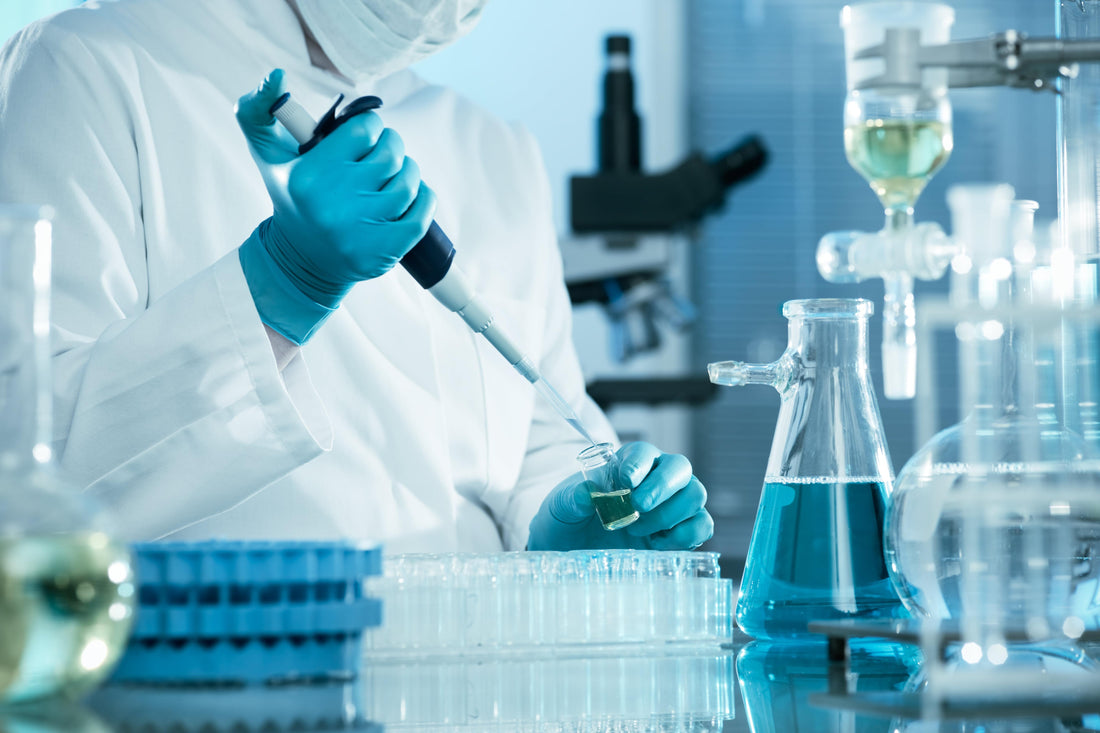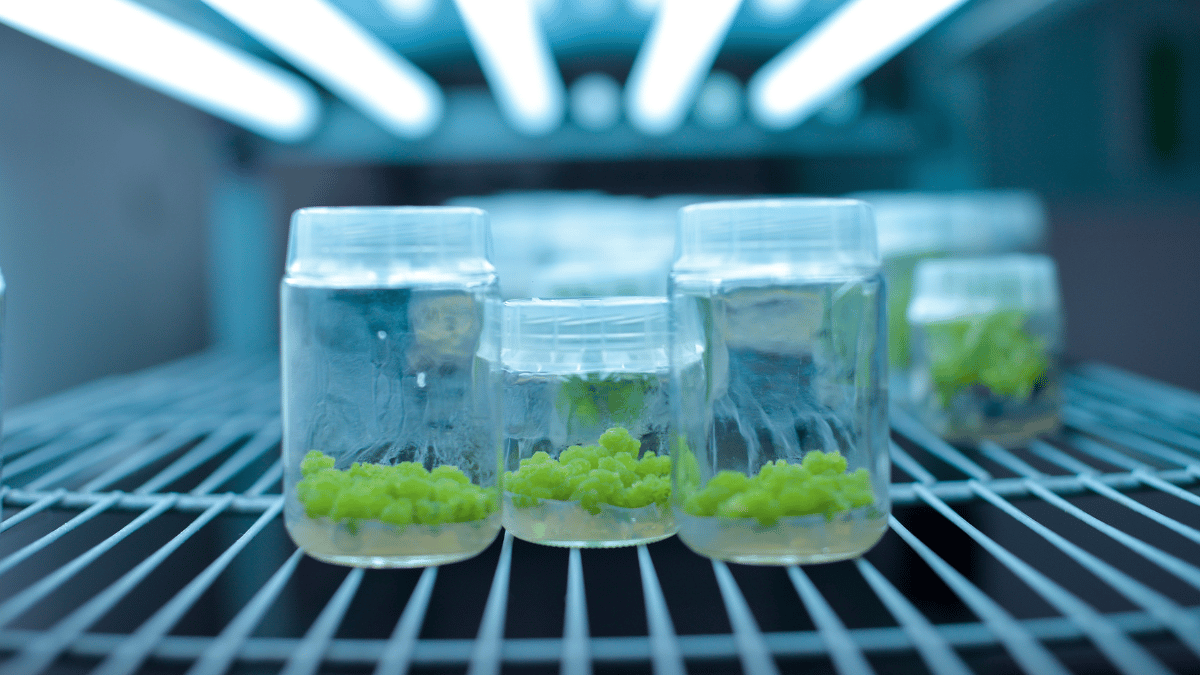
How to Build Your Own Tissue Culture Lab!
As a content and community manager, I leverage my expertise in plant biotechnology, passion for tissue culture, and writing skills to create compelling articles, simplifying intricate scientific concepts, and address your inquiries. As a dedicated science communicator, I strive to spark curiosity and foster a love for science in my audience.


Overview of Tissue Culture
The tissue culture technology has made it easy to grow plants of interest in an artificial environment. Over the years, small scale propagators or large commercial businesses have adapted the technique to grow and expand. However, setting up a tissue culture lab is not a piece of cake for everybody and it’s a bit pricey too.
Earlier, this technique was utilized either by researchers or large-scale businesses to obtain secondary compounds. In recent years, many hobbyists, florists, horticulturists, and some other growers have shown their interest in this technique for either breeding purposes, collection of endangered plants or plants that are difficult to grow by conventional methods, or mass production of horticulture plants (include fruits, vegetables, and ornamental plants).
If a person is willing to build a lab, they need little practice and an understanding of the basics to get started. This article is just for that person; we have found cheaper alternatives for small scale businesses or a hobbyist. This article will also discuss the approximate cost of setting up your lab, safety measures, and tips for building your lab.
The 4 Lab Requirements
To construct your lab, there are a few things that you will require depending on your purpose and level of business. The primary focus of tissue culturing is “aseptic condition” which should be maintained at all levels of culturing processes. Here, a list of basic requirements of tissue culture labs is explained. Wherever you plan to design your lab, these are four areas that you need to assign for purposes explained below.
1. Washing area: This area is designed to wash the glassware and other items used in the experiment. It should have a sink, a proper draining board where glasswares are dried and a storage cabinet to store all the clean vessels. You can keep this area small or large depending on the scale of your business.
2. Media preparation area: This area is comprised of machines required to weigh, prepare, and sterilize the media and to store the prepared stock solutions. The list of equipment is listed below. Only use analytical high-grade chemicals to prepare the media. Also, always ensure to maintain good laboratory practices while preparing media for your cultures. It includes correctly weigh the chemicals, precisely measure the pH of the media, and cover the flask containing media properly for sterilization.
The water used in media should be highly purified so strictly avoid the use of tap water. Either reverse osmosis or use double distilled water.
Why can’t you use tap water?
Tap water is rich in undesirable salts, particulate matter (silt, organic matter, etc.), and microorganisms (algae, fungi, and bacteria). These can disturb the media and affect the growth of cultures or contaminate the whole culture resulting in massive loss
3. Transfer area: This area is designated to perform the experiments. So, this area should be maintained in highly sterilized conditions. For this purpose, labs install a laminar flow hood with a HEPA filter however if your budget is low you can turn a plastic box into a culture area and keep an air filter to purify the air. The other basic equipments that are needed include electricity, ultraviolet light, compressed air, vacuum, and a positive pressure ventilation unit.
4. Culture room or area: In this area, the cultured plants incubated in a specific controlled environment. For this purpose, the culture room should be equipped with temperature control and fluorescent light to reach 10, 000 lux. Some experiments require specific light conditions or some may require dark conditions. For this, some culture racks should have curtains to create a dark environment while some have set up or electrical circuits properly attached to racks to provide specific light conditions.
The culture room should have a uniform humidity ranging from 20-80 % and the air conditions installed in this room should have regulators to adjust the temperature and humidity accordingly.
NOTE: If you have limited rooms or space then you can divide a single room into the transfer area and culture area and both of them should be separated with a double door. This maintains the specific environment inside the culture room.
We have discussed the four major areas required for this process. Now, the equipment you need to experiment, in what quantity, and for which purpose are discussed in this section.
- Water purified system: It is required in one quantity to obtain double distilled water to prepare the stock solutions and media.
- Autoclave: It is needed in two quantities, one for sterilizing equipment and media and the other for decontaminating the used equipment. You can choose the size depending on your scale of culturing.
- Laminar airflow cabinets: To perform your experiments in it, like culturing and subculturing plants. You can also create it by using plastic boxes and keeping a small air filter.
- Refrigerator or freezer: to store the stock solutions, hormones, and prepared media.
- The other materials required are:
- pH meter, hot plate/stirrer, glasswares and beakers, forceps, bunsen burner, wash bottles, brushes, culture vessels and tubes, Erlenmeyer flasks, graduated cylinders, glass pipettes, scalpel handles, and blades, spatulas, stir bars, roll tape, gloves, parafilm, lab markers, paper towels, detergents, isopropyl alcohol, chlorine bleach, and brushes.
The Plant Cell Technology has posted a video on its Youtube channel on the construction of a new lab at a low cost. If you want any kind of help in building your lab reach out to us at the given email ID. We can give you an extra hand in the journey to make it smoother and faster! Till then, Happy culturing!
References
Blog Categories
View by Level
Popular Blogs

Callus Culture: Definition and Applications
Introduction Tissue culture is not just one technique! Yes, you heard right! As you know, tissue culture is an advanced...
Read More
6 Plant Tissue Culture Books to Keep Learning
Introduction Most of us are fans of books when it comes to learning a topic in detail and in a...
Read MoreSubscribe to Our Newsletter








Join the conversation
Your email address will not be published. Required fields are marked